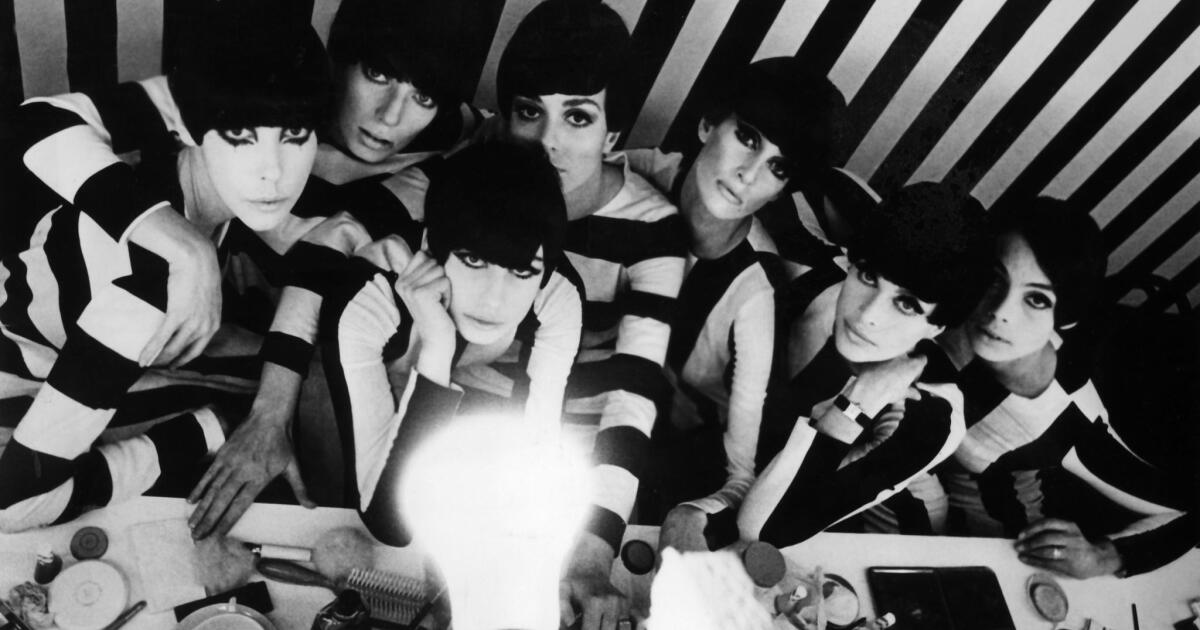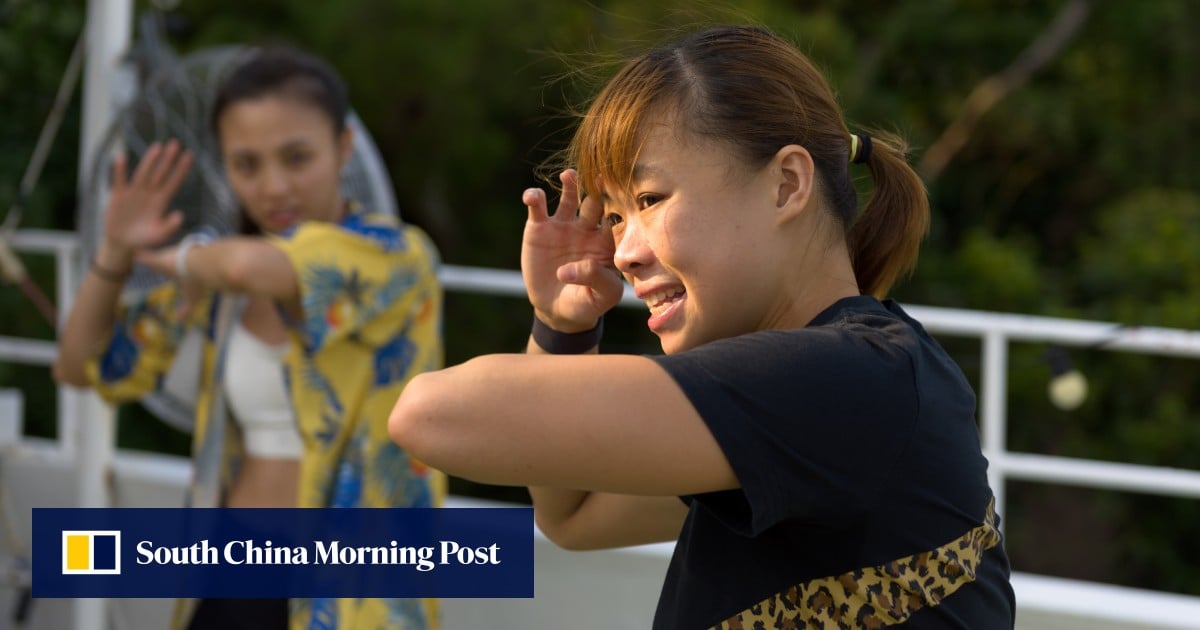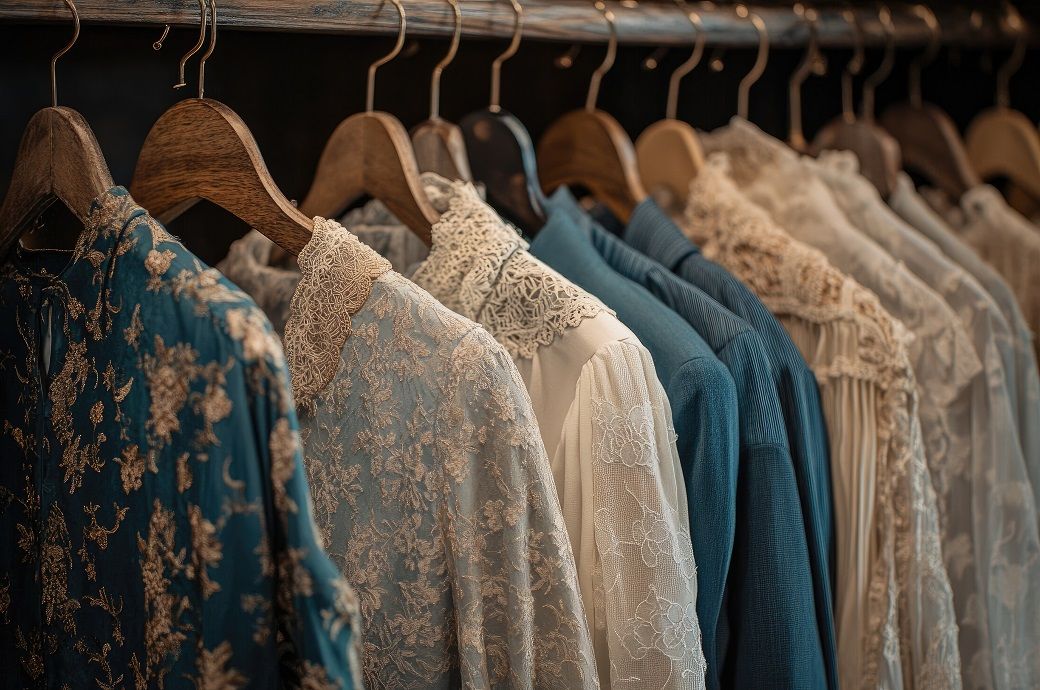Fashion
Fashion model Peggy Moffitt has died

Peggy Moffitt, the L.A. fashion model whose Harlequin-like makeup and mime-inspired poses set her apart during the fashion free-for-all of the 1960s, has died at her home in Beverly Hills. She was 86.
Seemingly never out of vogue, Moffitt died Saturday from complications of dementia, her son, Christopher Claxton, told the New York Times.
As the muse of avant-garde designer Rudi Gernreich, she helped convey the futuristic themes of his collections with her unconventional style. She was known for her striking appearance, which included a mask-like white complexion, extended black lashes, black or bright colored eye shadows and an occasional sprinkling of daisies, teardrops or silver triangles on her cheeks.
Her haircut, a short geometric shape by Vidal Sassoon, added to her stylized look, which became an embodiment of the ’60s. She maintained the look long after her modeling career ended.
Moffitt caused a fashion sensation in 1964 when she posed in a topless swimsuit Gernreich designed. It was a racy variation on a schoolboy’s shorts, with suspenders rising between the cleavage. The suit was condemned by the Vatican, the Kremlin and the governments of the Netherlands, Denmark and Greece.
“I agreed to do it only when I finally believed that Rudi wasn’t exploiting me,” Moffitt said. “There really was a message and that message was ‘freedom.’”
Moffitt struck a shy schoolgirl pose before the camera as her husband, William Claxton, a well-known commercial photographer, took the picture in their living room. Several magazines requested something less revealing and Claxton took a second image, this time from the back. One or the other photograph appeared in newspapers and magazines around the world.
The following year, 1965, Moffitt posed in another bold Gernreich invention, a sheer “no-bra” with minimal structure that defied the padded underwear of the 1950s.
“In those days if a model was photographed in lingerie, that was it, she was definitely B-team,” Moffitt told the London Independent newspaper in an interview in 1992.
Richard Avedon, a top photographer for Vogue magazine, was hired to take the picture and Moffitt agreed to pose. “My teenage dream was to have a swimming pool and to work with Avedon every day,” she later confessed.
Her early modeling risks paid off. During Gernreich’s comet ride through fashion’s memorable decade, Moffitt was the free spirit at his side.
“Peggy Moffitt was the epitome of the muse,” said Patty Fox, a former fashion director for Saks Fifth Avenue. “Someone who not only inspired a certain designer but was identified with his work and became a lifelong friend.
“You can’t compare her to supermodels,” Fox said. “They are classically beautiful. She had a look. She created it and stayed with it, something more artificial than natural. She pushed it over the top.”
Moffitt’s distinctive appearance and manner made strong impressions.
“I was told I couldn’t model by every tacky editor and photographer in the world,” Moffitt told author Joel Lobenthal for his book “Radical Rags: Fashions of the Sixties.” Moffitt‘s answer was that she wanted to invent a new way of modeling that raised “the possibility of it being a new art form.”
In carefully planned fashion shows, she changed her attire to suggest first a “Japanese school girl,” then a “Chinese opera star,” among other roles.
“I entertained myself and the audience by regarding the collection as a play, with each outfit a new act or a new character,” Moffitt wrote in “The Rudi Gernreich Book,” which she and Claxton released in 1991. “That meant … drama, jokes, tension and slapstick. I really didn’t model the clothes so much as perform them.”
By the mid-1960s her face and Gernreich’s fashions were inseparable. “We were like Tweedledum and Tweedledee, Gilbert and Sullivan, ham and eggs,” she said. They hardly bothered to explain new ideas to each other. “We just knew,’’ Moffitt said. “We became one entity.”
Born in Los Angeles in 1937, the only child of film reviewer and writer Jack Moffitt, Moffitt traced her interest in extreme fashion and makeup to her high school years at the Marlborough School in Los Angeles. Students were required to wear uniforms and forbidden to wear lipstick. ‘’Perhaps therein lies the key to what came next,” she told the Independent in 1992.
At 17, she worked after school at Jax, a Rodeo Drive boutique that carried designer brand clothes including some by Gernreich. But she planned to be an actress, not a fashion model. She graduated from school and went to New York City, where she studied acting at the Neighborhood Playhouse for two years. Back in Los Angeles she got small parts in several movies, including “You’re Never Too Young” with Jerry Lewis in 1955 and “The Birds and the Bees” with David Niven and Mitzi Gaynor in 1956.
She met Claxton when he was on assignment photographing an actor friend of hers. They were engaged within a few months and married within the year.
Gernreich, Moffitt and Claxton worked to create fashion photographs that were instantly identified with Gernreich’s designs. One of the best known shows Moffitt wearing a stretch knit swimsuit with fencer’s visor and tall boots. In another she wears a mini-dress with clear vinyl stripes that expose bits of her midriff and thigh. The white seamless background in the photos kept the attention on Gernreich’s creations and Moffitt’s evocative poses.
She continued testing new ways to mix fashion and theater. “I’ve got 47 seconds to knock them into Peggy-land,” Moffitt told The Times in 1967. She had recently modeled in a fashion show that ended with her playing mad Ophelia from Shakespeare’s “Hamlet.” Dressed in a mini-wedding dress by Gernreich, she entered mumbling and staring and ended by screaming as she ran out of the room. “I’m a Method actress at heart,” she explained.
Her modeling style didn’t set trends but Twiggy, London’s waif-like teenage supermodel, credited Moffitt with influencing her. “She taught me how much more a model puts into her work than just a pretty face,” Twiggy wrote in “Twiggy: An Autobiography.” “She consciously controlled the sort of shape she presented to the camera.”
Moffitt admitted her close association with Gernreich came with its limitations. “People thought we were joined at the hip,” she told the Independent in 1992. “It was essential to separate from time to time.”
In the mid-1960s Moffitt and Claxton began spending more time in Europe than Los Angeles. He had photography assignments in London and Paris. She modeled and got a small part in “Blow Up,” the 1966 film classic about the British modeling scene, directed by Michelangelo Antonioni.
In the early 1970s they returned to Los Angeles where their only child, Christopher, was born. Moffitt is survived by her son. Claxton died in 2008.
She continued working with Gernreich. That, and her distinctive appearance, limited her options. When Gernreich died in 1985, Moffitt quit the fashion scene.
Decades after she first posed in Gernreich’s styles, the A-line minidresses of that time made a fashion comeback. Moffitt said in interviews that she hoped to find investment partners, reproduce Gernreich’s designs and put her name on the label with his.
“I said to the trademark office that my physicality is representative of Rudi in the way that Mickey Mouse represents Walt Disney,” she explained in a 1998 interview with Vanity Fair magazine.
Even late in life, Moffitt never stopped wearing Gernreich’s designs. She owned more than 300 pieces, some of which were featured in 2012’s “The Total Look,” an exhibition at the Museum of Contemporary Art at the Pacific Design Center, which explored her creative collaboration with Gernreich.
She owned the legal rights to all of the late designer’s creations and had hoped to relaunch the Gernreich brand.
“That I am still wearing his clothes 50 years later is as good a recommendation for someone’s talent as any,” she told The Times in 2013. “The times have changed, but his clothes still hold up for the way we live today.”









